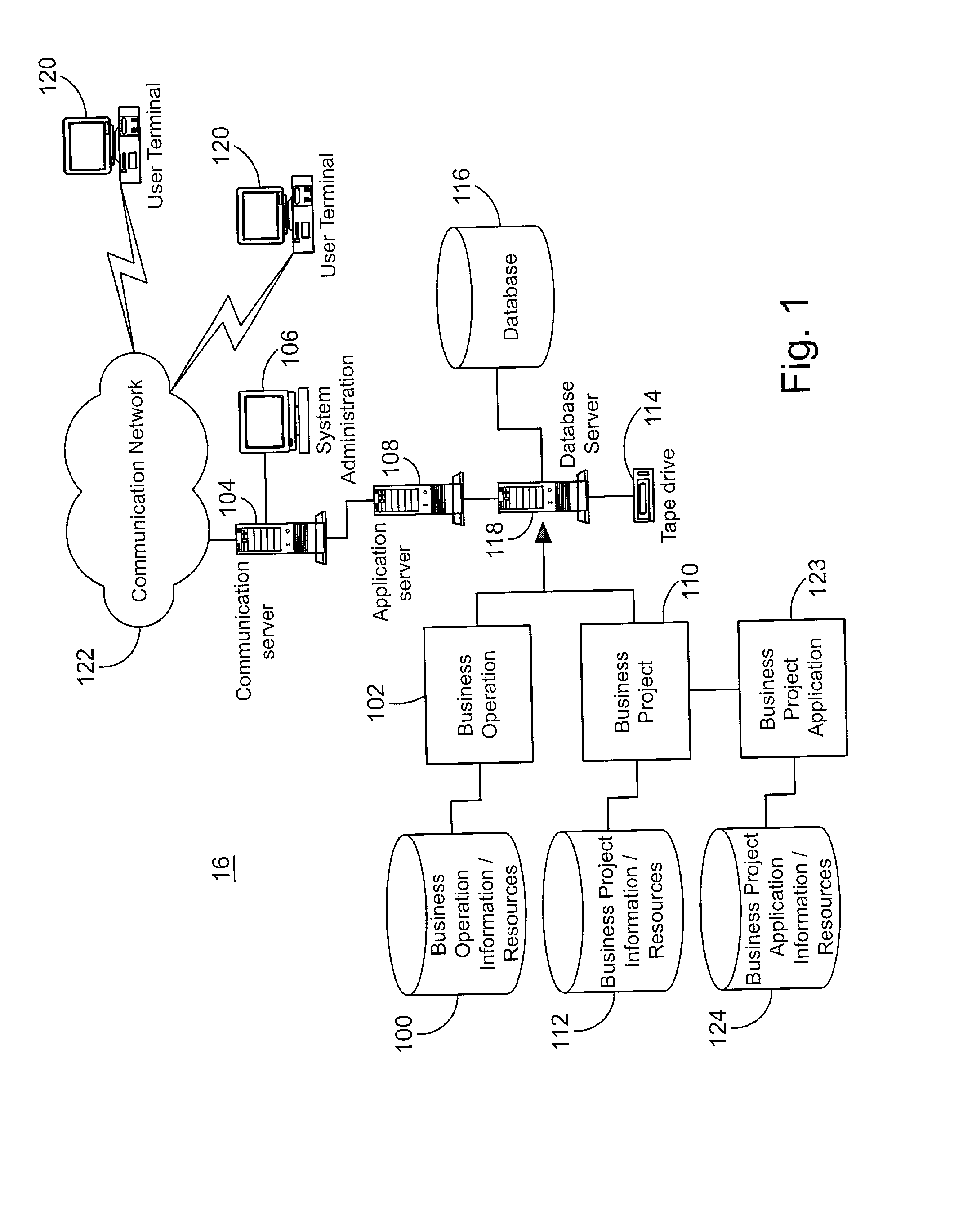System and method for managing global risk
a global risk and risk management technology, applied in the field of global risk management system and management method, can solve the problems of enterprise risk exposure, large fines, potential intense scrutiny by regulatory agencies, and serious consequences of evaluating risk for a given enterprise, so as to minimize the risk level of the enterprise and minimize the exposure to risk
- Summary
- Abstract
- Description
- Claims
- Application Information
AI Technical Summary
Benefits of technology
Problems solved by technology
Method used
Image
Examples
Embodiment Construction
[0037] Referring now to FIG. 1, a diagram of system components and their interconnection is shown generally as system 16. A number of users 120 are able to access system 16 through a communication network 122. Users 120 connect to a communication server 104, for which connection access is granted by a system administrator 106. An application server 108 is connected to communication server 104 and provides users 120 with formatted application information that is transmitted to users 120 through communication server 104. Application server 108 is also connected to a database server 118 that operates to access and collect data related to the application. Database server 118 is connected to, and can access, a database 116 to retrieve, store and modify application related information. Database server 118 is also connected to a tape drive 114 to permit application information to be backed up and stored for safekeeping.
[0038] Database server 118 is aware of a number of business operations ...
PUM
 Login to View More
Login to View More Abstract
Description
Claims
Application Information
 Login to View More
Login to View More - R&D
- Intellectual Property
- Life Sciences
- Materials
- Tech Scout
- Unparalleled Data Quality
- Higher Quality Content
- 60% Fewer Hallucinations
Browse by: Latest US Patents, China's latest patents, Technical Efficacy Thesaurus, Application Domain, Technology Topic, Popular Technical Reports.
© 2025 PatSnap. All rights reserved.Legal|Privacy policy|Modern Slavery Act Transparency Statement|Sitemap|About US| Contact US: help@patsnap.com



